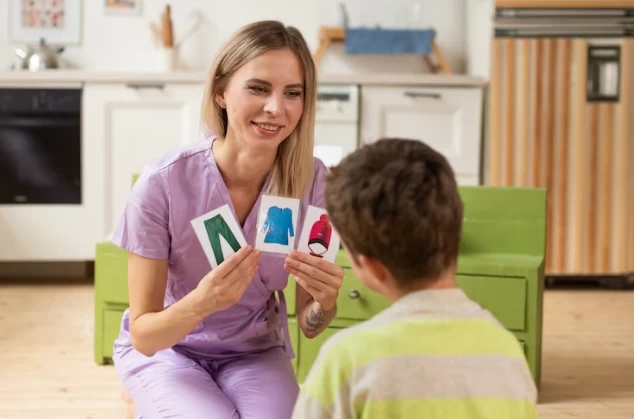
How Does the Occupational Therapy Process Work?
- How Does the Occupational Therapy Process Work?
- What is Occupational Therapy?
- History of Occupational Therapy
- Scope of Occupational Therapists' Work
- How Does the Occupational Therapy Process Work?
- How is an Occupational Therapy Program Created?
- Occupational Therapy Program Implementation
What is Occupational Therapy?
Occupational therapy is a client-centered healthcare profession that aims to improve health and well-being through meaningful and purposeful activities, incorporating various therapeutic strategies. Pediatric occupational therapists specialize in the therapy process for children and infants. They work to promote, maintain, and enhance the necessary skills for functional performance in their clients' home, school, and family environments.
History of Occupational Therapy
Before delving into the topic further, it is useful to provide a brief history of occupational therapy.
The history of occupational therapy has evolved into its modern practices. Here are some key points in its history:
- 18th and 19th Centuries: The roots of occupational therapy trace back to early treatment and rehabilitation methods for mental and physical health issues during the 18th and 19th centuries. During this period, observations were made about the positive effects of engaging mentally ill individuals and other disabled individuals in manual crafts and trades as part of the treatment process.
- Early 20th Century: Occupational therapy played a significant role in rehabilitating soldiers injured during World War I. Handicrafts and manual activities were used to contribute to the healing process of injured soldiers.
- 1917: The term "occupational therapy" was coined by combining "ergo" (work) and "therapy." This term reflects the fundamental goal of occupational therapy: to facilitate healing and improvement through everyday life activities.
- 1930s - 1950s: Occupational therapy gained more acceptance within the medical field and became recognized as a professional profession. Occupational therapy schools and education programs began to emerge during this period.
- 1960s and Beyond: Occupational therapy found application in a wide range of health and rehabilitation fields. It provided services not only to individuals with physical, mental, and emotional disabilities but also to children, the elderly, and other groups. The occupational therapy approach focused on creating personalized rehabilitation plans that considered individuals' holistic needs and goals.

Scope of Occupational Therapists' Work
Occupational therapists work towards enabling both typically developing (healthy) children and children with special needs to participate in daily life activities, roles, and responsibilities with maximum independence.
How Does the Occupational Therapy Process Work?
The occupational therapy process involves a therapy journey that is fast, effective, and enjoyable due to therapeutic games taught to families and continued at home. The teachability of the therapy process to families supports therapy at home, allowing the child to quickly and easily transfer acquired skills to daily life. Occupational therapists evaluate children from sensory, motor (fine and gross motor), cognitive, psychosocial perspectives and apply evidence-based strategies in their therapy programs.
How is an Occupational Therapy Program Created?
Within our team of occupational therapists, we identify these problems through standardized tests and consider symptoms to establish the root cause of the issue. This approach allows us to create an occupational therapy program that addresses the core issue, preventing all possible symptoms rather than just addressing individual symptoms.
Occupational Therapy Program Implementation
To make the therapy program enjoyable for the child, we identify their strengths and incorporate the areas that need development into these strengths. The therapy is regularly evaluated to track progress. Our team continues the therapy process with homework, home programs, and video follow-ups. This way, children, along with occupational therapists and their families, overcome sensory integration issues that might hinder their daily lives and well-being.



